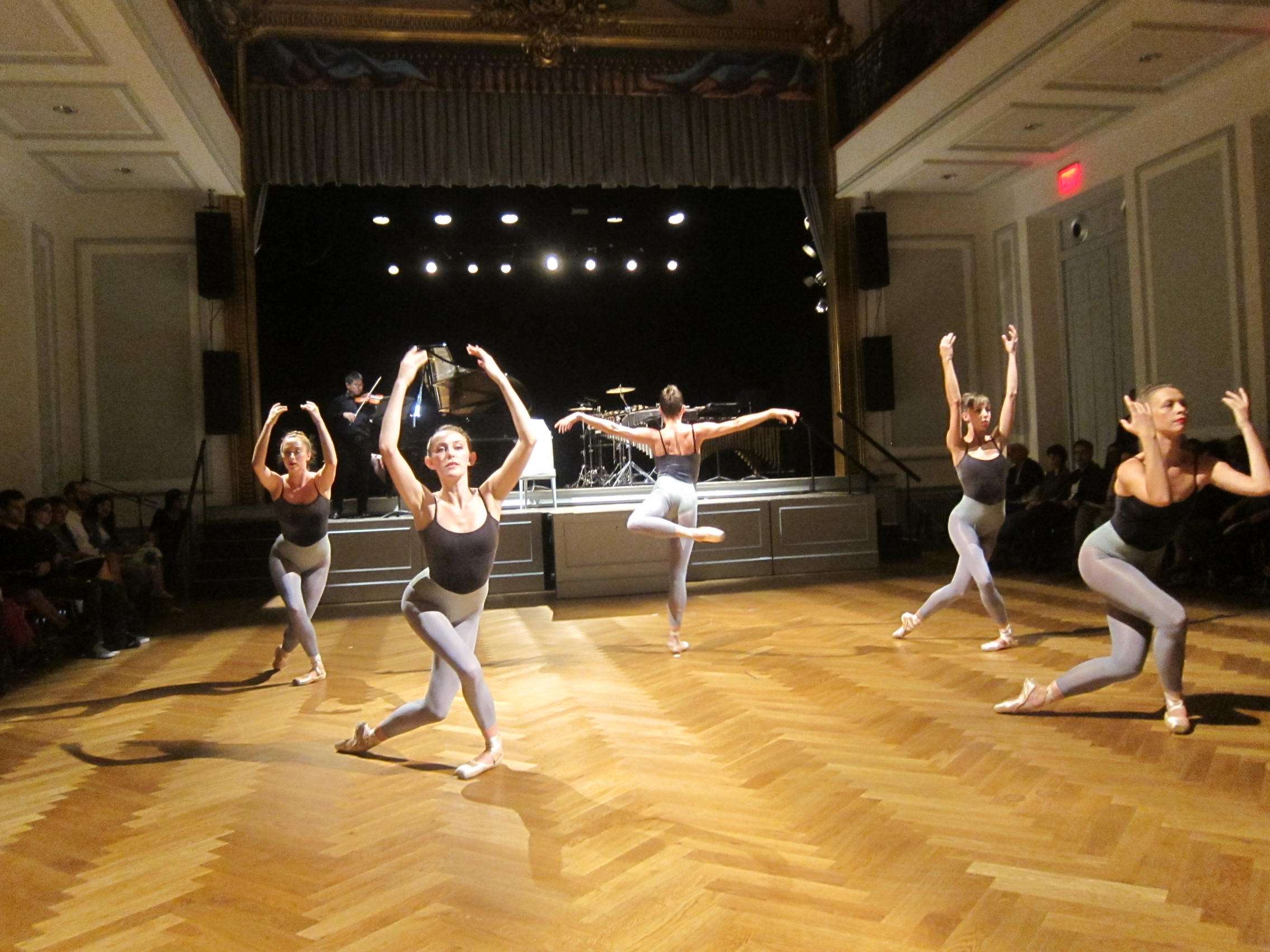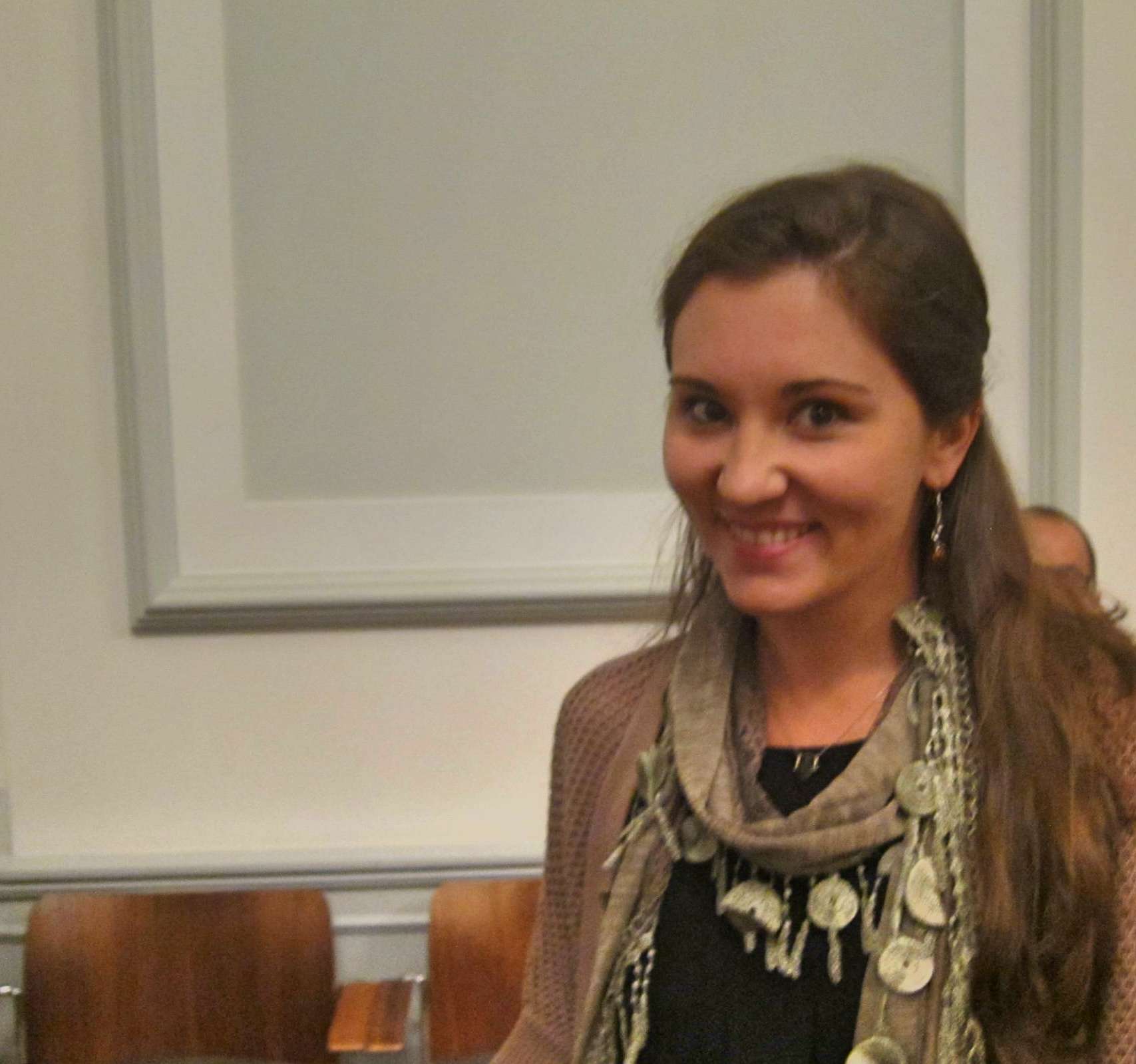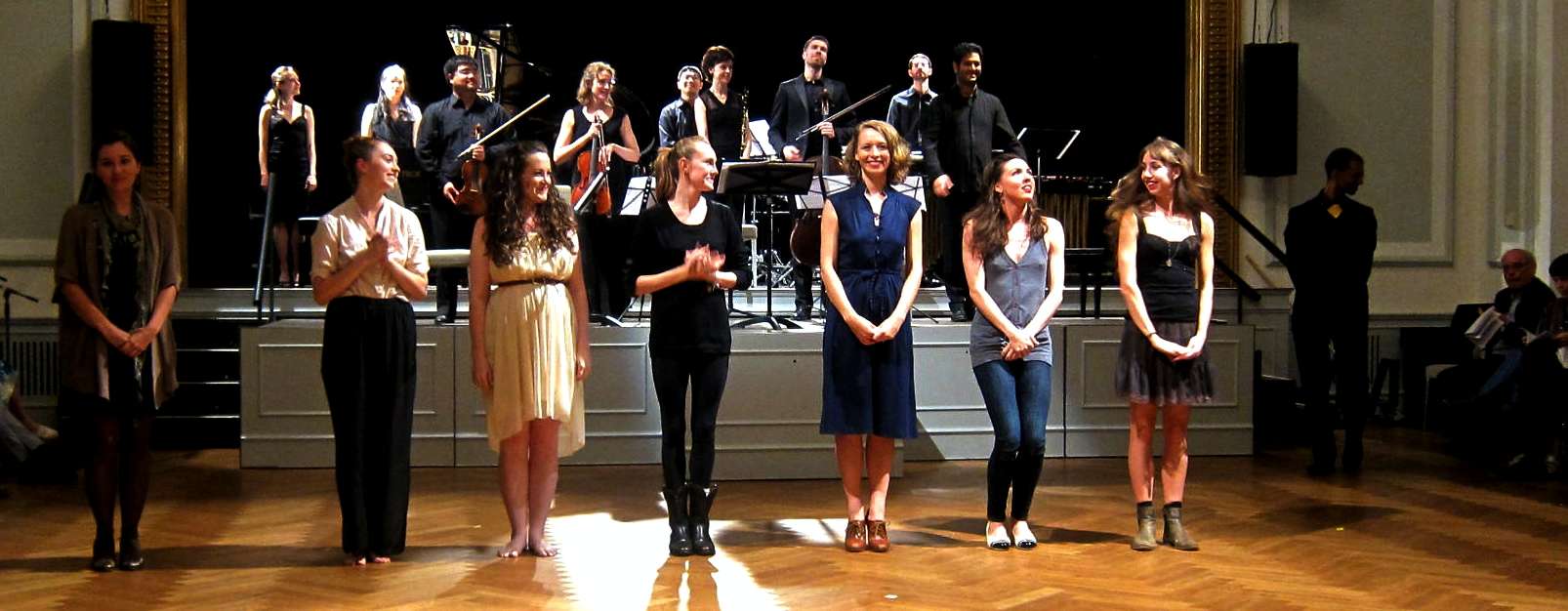|
Back
Instruments of Art, Feets of Skill New York
Bohemian National Hall at Czech Center
09/20/2013 -
2013 Moving Sounds Festival
Georg Friedrich Haas: Phantasien for clarinet and viola
Anton Webern: Four Pieces for Violin and Piano, Opus 7
Nina C. Young: Tethered Within for eight musicians (World Premiere) – Music for Movement (excerpt) for violin and piano (World Premiere)
Arthur Kampela: Bridges for viola
Beat Furrer: Aria for soprano and ensemble
Argento Chamber Ensemble: Sharon Harms (Voice), Jill Sokol (flute), Carol McGonnell (Clarinet), David Stevens (Percussion), Joanna Chao (Piano), Ken Hamao, Doori Na (Violins), Stephanie Griffin (Viola), Serafim Smigelsky (Cello)Michel Galante (Conductor)
New Chamber Ballet: Miro Magloire (Choreographer and Artistic Director), Sarah Atkins, Elizabeth, Holly Curran, Traci Finch, Amber Neff (Dancers), Melody Fader (Piano), Dorri Na (Violin), Sarah Thea Swafford, Candice Thompson (Costumes)

Dancers in Bohemian Hall (© Coco T. Dog)
I’m scared by dancers. Not Fred or Audrey or Gene, with whom you might imagine, “Gosh, if I had that rhythm, maybe I could’ve done the same thing.”
But a fright of modern and ballet dancers, whose bodies are so fierce, whose movements are so delicate, with whom every organ is impossibly dynamic, who need no music but themselves. Yet when they have the music, they don’t accompany, but play a virtuoso solo or add a delirious counterpoint.
So it was my own fault that I had ignored the double entendre of the three-day multi-venued “Moving Sounds Festival.” The moving was emotional, but this festival is devoted to choreographers, dancers, costumers, master musicians (no ensemble is better than the soloists and conductor of the Argente Ensemble), and obviously balletomanes, amongst whom I am not. So for this second evening of the Moving Sounds Festival, entering the Bohemian National Hall at the Czech Center, the stage was set up for the Argento Ensemble, but this was one end of a vast space for dancers, with the audience filling up the other three lines of the rectangle. (As well listeners in the balcony, since the event had long been sold out.)
The first work showed that I am not a multitasker. I tried with all my soul to concentrate on both the three dancers and the music by Georg Friederich Haas, but had to surrender, by listening to the sounds rather than the movements. With Carol McGonnell mastering two clarinets and Stephanie Griffin on viola, Mr. Haas had constructed one of his works which are remote, mysterious, desolate and included a series of time trips. In this case, it was the coloration of these dark instruments playing in unison or a quartet-tone apart. And in two sections, Mr. Haas transported us back six or seven centuries, as both instruments played with 14th Century open fifths. Again, this was a gorgeous construction, and while Mr. Haas didn’t attend, he has the sensory equipment to have probably heard it in his mind up at Columbia University.
I feared most the Webern Five Pieces for Violin and Piano. Such pristine equations would never succeed with dancers. It would be like superimposing an 18th Century portrait over a Jackson Pollack painting. And–whew!!–such a potential error was never attempted. Yes the five dancers performed. But they danced between the movements. Nor did they seem to be attempting to “illustrate” the Webern. Maybe they were commenting, putting down–literally–footnotes to Webern’s tight matrix of musical notes, though the Webern was in a curved, ever moving universe all its own.

Nina C. Young (© Coco T. Dog)
One of the two works absolutely made for music and dancers was Tethered (or, retitled for the ballet, Come Closer), by Nina C. Young. Hardly 30 years, the accomplished composer described her restrictions on composing this piece, which were “nerve-racking.”
So she made her music to reflect her thoughts.
The eight Argento musicians under Michel Galante, gave a spiky, buzzing, work which was indeed nervous, edgy, accomplished in orchestration but perhaps meant to give a breakdown. The dancers gave impetus to what I imagine were a series of bodily equations, wrapping arms, legs, bodies in spheric or rhomboid configurations. The partnership was ideal.
Following this, Mr. Galante himself provided a slow-moving work for violin and piano, the latter gradually crawling up and down the scale, the violin (Doori Ma) playing open strings, fluttering with the pair of dancers.
The final work, by Beat Furrer, I felt, reminded me of an early rare Mel Brooks satire on modern music and modern art. It began with (what Shakespeare called), “Dumb Show”, dancer and singer gesturing and signaling, quite ardently, very sincerely, while the Argento Ensemble were silenced. After this, singer Sharon Harms ascended to the stage, joining Argento in their various soft beeps, burps, clangs and chirrups and booms. Ms. Harms added her own sounds to the ensemble (even screaming wordlessly once), as dancer Holly Curran lay fondling her feet.
The finish (to quote Shakespeare once more) was like that historic stage direction, “Exeunt pursued by a bear.” In this case, the singer exeunted followed by clarinetist Carol McGonnell who did an unbelievable clarinet simulation of Mr. Harms own sounds.

Argento Chamber Ensemble, New Chamber Ballet
(© Coco T. Dog)
I leave my favorite for last. Violist Stephanie Griffith walked into the arena, sat next to the audience, took out her fiddle and ran her fingers up and down the fingerboard in an electric series of triple– and double-strings, whizzing through a kind of stratospheric square dance.
Simultaneously, dancers Elizabeth Brown and Amber Neff danced with each with ebullience, elation and the unalloyed happiness of the music.
Composer Arthur Kampela had called the work Bridges, but the ballet name was rightly and joyously entitled Fiesta.
Which, to dance-lovers in the audience, was the evening’s appropriate appellation.
Harry Rolnick
|